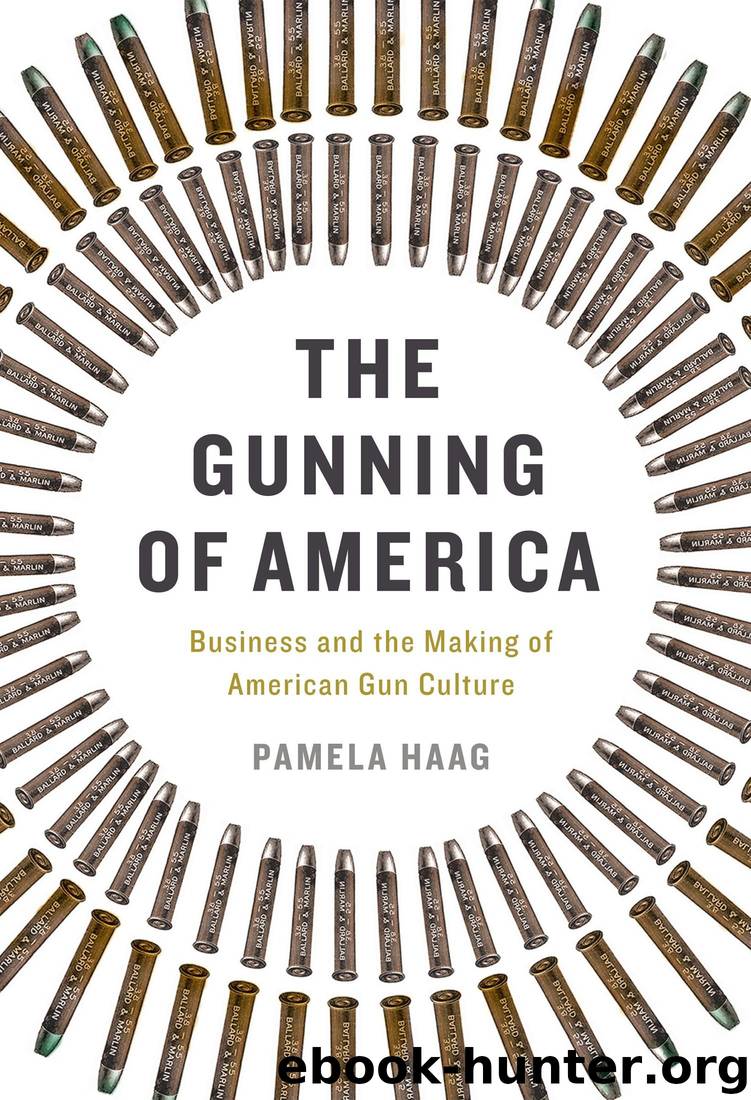The Gunning of America: Business and the Making of American Gun Culture by Pamela Haag

Author:Pamela Haag
Language: eng
Format: mobi, epub
Tags: Weapons, General, United States, Military, 19th Century, History
ISBN: 9780465098569
Publisher: Basic Books
Published: 2016-04-19T04:00:00+00:00
THE MYSTIQUE OF THE WINCHESTER GUN COULD NOT HAVE BEEN more removed from the Winchester gun business, and in a way, that was precisely the point, and precisely the gun’s quickening seduction. As was true in the 1800s, in the early 1900s the ways of the gun economy and the gun mystique diverged. As hunters dug bullets out of the carcasses of hippos in Africa or spent weekends in recreational hunting, the Winchester factory and its workers were coming under the punctilious, soulless regime of scientific management.
Springfield Armory colonel Roswell Lee and the gun industrialists had pioneered the American System of manufactures in the early 1800s, and their intellectual heirs had refined it toward scientific management by century’s end. Henry Metcalfe, Lee’s intellectual progeny, had run several arsenals. Metcalfe published the first book on cost accounting in manufacturing. He and other engineers delivered papers about “indirect expenses”—the hidden costs, burdens, and liabilities of manufacturing things.23
As Andrew Carnegie explained in North American Review, when artisans or small manufacturers produced goods, a businessman could easily “limit or stop production” as demand changed. But, in “enormous establishments with five or ten million dollars of capital invested,” it cost less to run at a loss than to “check his production.” The basic algorithm of the gun business in the new century, and this new phase, was that even as gun need, and markets, became somewhat harder to define, the quantity of guns produced was ever greater as factories moved toward continuous-process production. Colt’s made the most pre–World War I pistols and revolvers in 1911 (152,644; 1 per 614 Americans) and 1912 (137,342; 1 per 694). Winchester made over a quarter of a million guns in 1911 (256,834, or 1 per 365 Americans) and achieved its highest prewar sales in 1912, with 324,500 (1 per 293 Americans). Winchester sold an average of over a quarter of a million guns (269,783) annually from 1904 to 1910, and Winchester sales from 1911 to 1914 averaged 300,000 guns a year. Military and foreign sales alike had receded, and the bulk of the increased production was sold in the domestic market.24
Frederick Winslow Taylor delivered his first paper on the scientific management of the factory in 1895. He proposed meticulous time-motion studies of each action involved in the production of each part of each item produced. The goal was to keep an order flowing continuously and smoothly through the production process, without costly lulls, gaps, hiccups, or idle time. In this way, too, each factory could assign an optimal unit cost for each commodity.25
Robert Werle, a Yale Sheffield School graduate, was the time-motion man of guns. He conducted scientific management time studies at the Winchester and Colt factories in the 1910s. Werle and his team meticulously observed and parsed each operation in the making of a gun. Eli Whitney’s founding logic of the gun industry, to fracture the process into small parts, had been taken to its desiccated extreme. The Winchester drill press involved 11 discrete movements per operation by one workman.
Download
The Gunning of America: Business and the Making of American Gun Culture by Pamela Haag.epub
This site does not store any files on its server. We only index and link to content provided by other sites. Please contact the content providers to delete copyright contents if any and email us, we'll remove relevant links or contents immediately.
| Biological & Chemical | Conventional |
| Nuclear |
The Radium Girls by Kate Moore(11921)
100 Deadly Skills by Clint Emerson(4840)
Rise and Kill First by Ronen Bergman(4701)
The Templars by Dan Jones(4628)
The Doomsday Machine by Daniel Ellsberg(4415)
The Rape of Nanking by Iris Chang(4136)
Killing England by Bill O'Reilly(3951)
Hitler in Los Angeles by Steven J. Ross(3900)
Stalin by Stephen Kotkin(3875)
12 Strong by Doug Stanton(3508)
Hitler's Monsters by Eric Kurlander(3268)
Blood and Sand by Alex Von Tunzelmann(3138)
The Code Book by Simon Singh(3074)
Darkest Hour by Anthony McCarten(3070)
The Art of War Visualized by Jessica Hagy(2943)
Hitler's Flying Saucers: A Guide to German Flying Discs of the Second World War by Stevens Henry(2714)
Babylon's Ark by Lawrence Anthony(2620)
The Second World Wars by Victor Davis Hanson(2480)
Tobruk by Peter Fitzsimons(2443)
